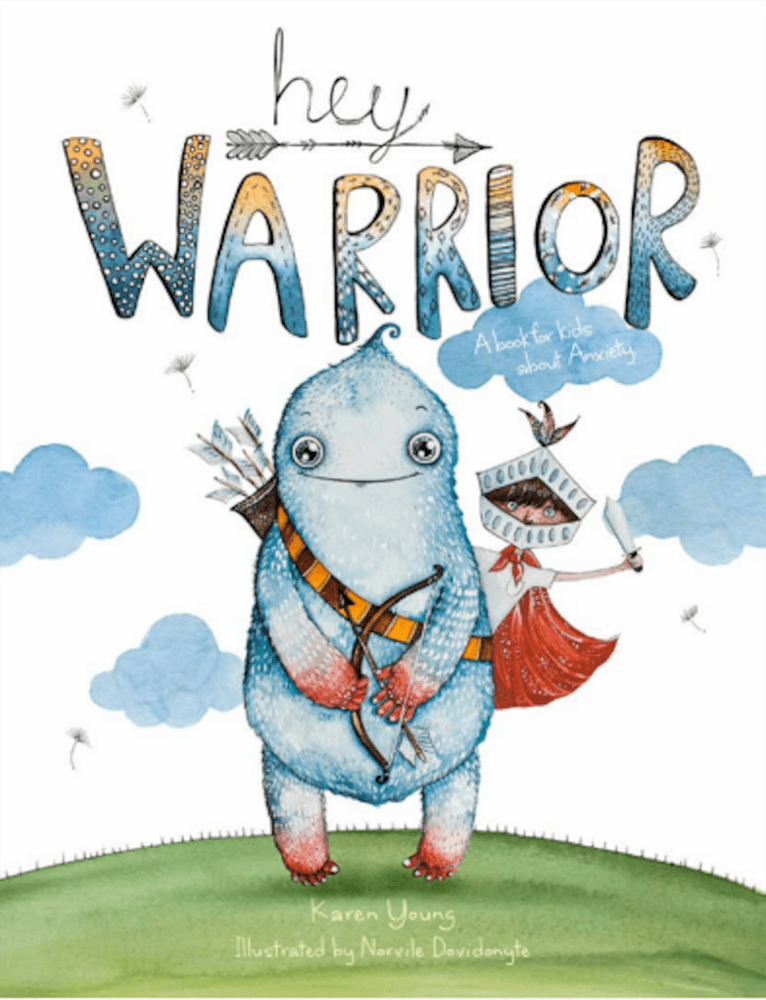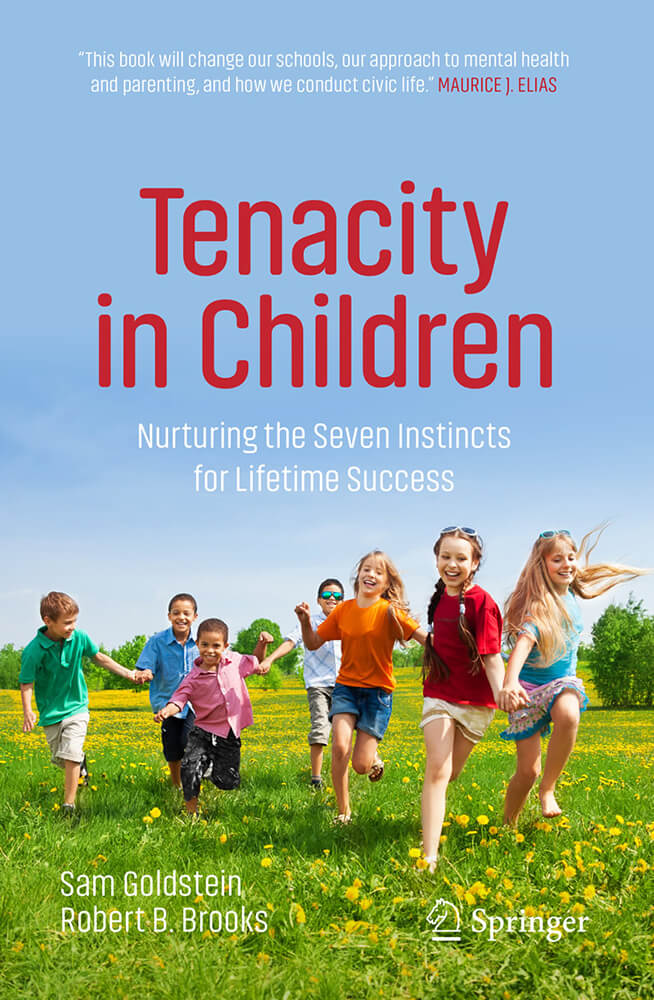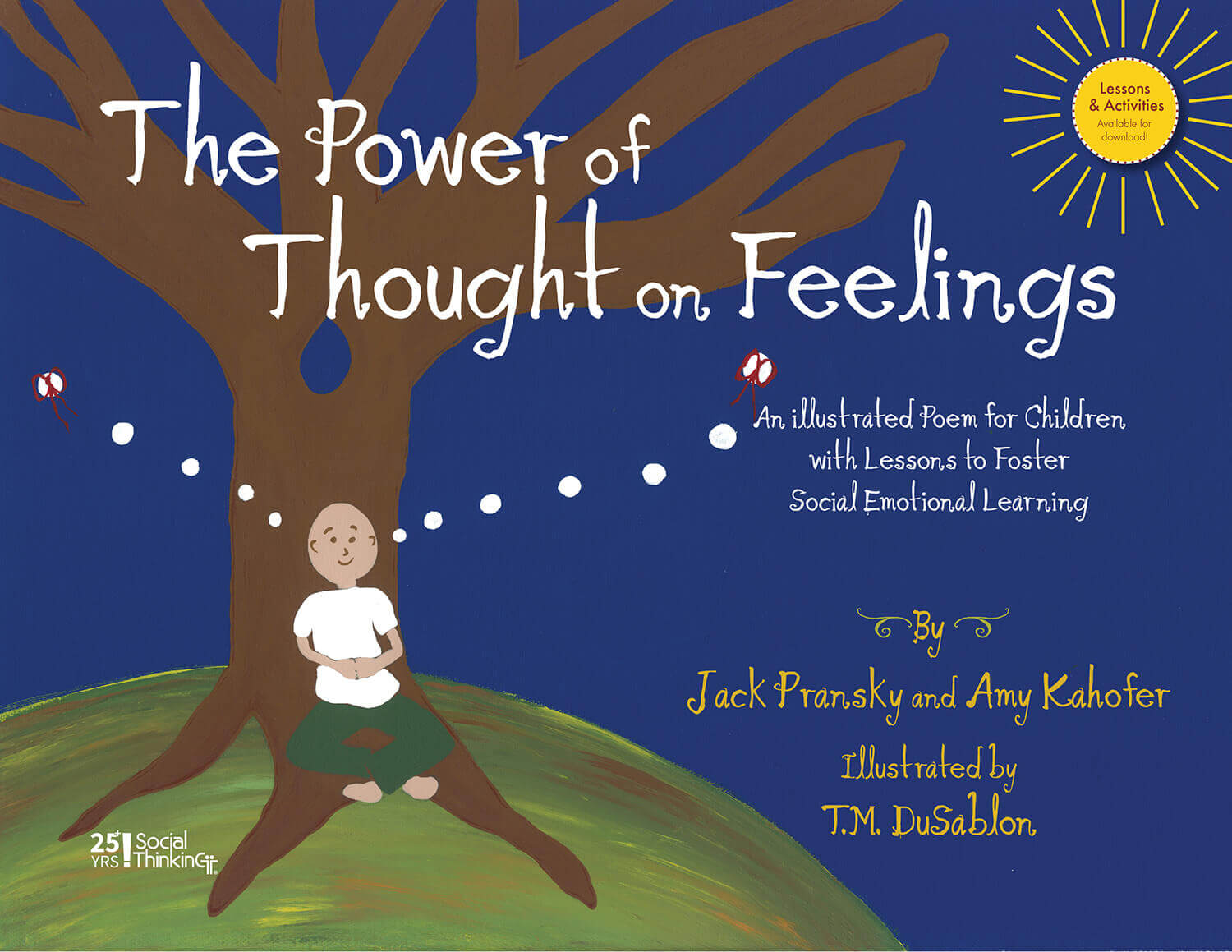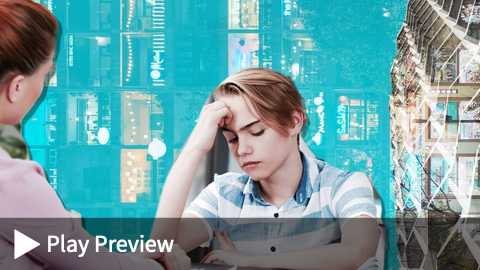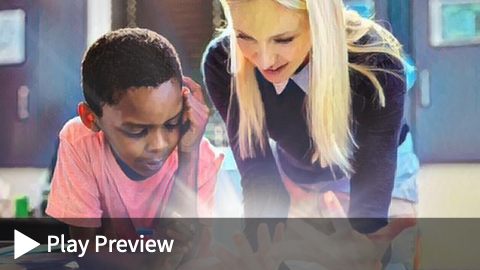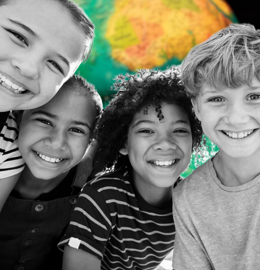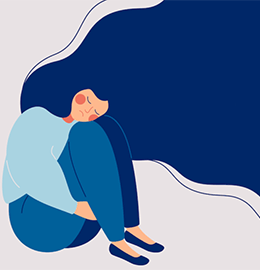As crises persist educators must be intentional about helping students adapt and build resilience.
Even in the face of daunting challenges educators can continue to effectively support students and their families. Indeed, schools have a unique capacity to ease anxiety for students while serving as models of resilience during a historically challenging time. As civic leaders in whom students and families place their trust, educators can take concrete steps to reduce stress, cultivate productive coping mechanisms, and build a generation of resilient and well-adjusted children.
Be realistic
To help build students' resilience, educators must first be realistic with them about the uncertainties we are facing. The Stockdale Paradox can help shed light on why this is important (Collins, 2001). This theory dates back to the Vietnam War, when James Stockdale, a US naval officer, was held captive and tortured as a prisoner of war by the North Vietnamese for seven years. Later, asked how he survived such a difficult time, he said his ability to maintain a realistic view of his situation was critical to his survival. Prisoners who were overly optimistic fared worse. "They were the ones who always said, 'We're going to be out by Christmas.' Christmas would come and it would go. And there would be another Christmas. And they died of a broken heart," Stockdale said.
To educators who are used to looking at things through a highly positive lens, the Stockdale Paradox may seem counterintuitive. But though it may sound dramatic to compare COVID-19 lockdowns to prisoner-of-war experiences, the premise is the same. Initially, students were told they might be returning to school in two weeks. Then it was a month. Then graduations were canceled. Then, before they knew it, classes were out for the summer with uncertain plans for a return to school in the fall. There is no guarantee of when things will return to "normal." And though students are certainly not being held captive, some of their most basic needs—from socializing with friends in the cafeteria to having sleepovers on the weekends—have been stripped from them.
Rather than sugar-coating the situation, teachers must help students learn to cope with a new, often disappointing, reality without losing hope for brighter days ahead. They should focus on helping students make the most out of a difficult situation and highlight the importance of maintaining their safety. At the same time, educators should caution students to limit their exposure to the news and social media (which can exacerbate worry) and encourage them to find creative ways to stay busy.
Adapting to new routines
Schools can also help students and families deal with anxiety over the continually shifting instructional-delivery plans by setting realistic expectations for blended classrooms and virtual learning. Remote learning is fundamentally different from classroom-based learning, and it should be treated as such. Whereas a typical school day is a full eight hours, elementary school kids should be reasonably expected to participate in only one to two hours of online education daily; for middle and high school students, the limit should be two to three hours and three to four hours, respectively. Indeed, being realistic and intentional about change also means helping students adapt to new instructional routines and settings. We can't just implement new learning formats without acknowledging the uncertainty and stress they might bring. Some additional ways to help students adjust to changing learning routines include these:
- Recognizing that unfamiliar and new routines can be anxiety provoking. In particular, students with a history of trauma may have a range of reactions, including hypervigilance, increased irritability, or withdrawing. It is crucial for educators to validate their frustration, maintain consistency, and hold high expectations in a kind and clear way.
- Explaining to students why these new routines are necessary. Educators can empower students by emphasizing the ways each student plays a key role in keeping everyone healthy and safe.
- Explicitly teaching new routines and processes to students. It may be beneficial for the school to send videos to students and families so that students know what to expect. Keeping lines of communication open with families and students is also vital.
- Infusing joy into new routines. Though safety protocols are important and serious, we can allow students the freedom to build joy into new structures. For example, students may come together to make up a class song to sing while washing their hands or decorating their desk dividers. Incorporating virtual movement breaks and centering techniques (such deep breathing exercises or activities using the "five senses.) For students in a heightened, overwhelmed state, this approach can help to calm the autonomic nervous system.
- Emphasizing students' strengths. Because new processes can be overwhelming, teachers should ensure they are also infusing their lessons with areas for students' competency to shine.
Provide controlled choice
We know that resilient people focus on aspects of the world that they are able to control, as opposed to worrying about factors outside their sphere of influence (Brooks & Goldstein, 2003; Brooks, 2007). As we head into the new school year, there's a great deal that educators and students can't control, but educators can help mitigate the anxiety that comes with lack of control by offering controlled choice to students whenever possible.
For example, schools could offer students more flexibility in their scheduling, and teachers could give them the ability to choose from a variety of assignments, writing prompts, or project formats. They can offer students the option of opting out of video during online lessons whenever possible or contributing to discussions through the chat feature.
More importantly, they can elicit regular feedback from students about which school changes are working well and which could use improvement. Schools can emphasize that whatever model of learning they are using at the start of this year is new for everyone, and that students have an important role to play in shaping its direction and success.
Contributory activities
Encouraging students to participate in activities that serve their community can also help reduce anxiety and stress. Psychologist Robert Brooks has suggested that "giving back" is the single most important way to cultivate resilience (2007).
When considering how to guide students on how to productively engage with society, it's imperative to focus on activities that are truly meaningful to the children rather than simply a matter of checking a box. Students must be permitted to tap into their own values to create personal and effective ways to contribute to their communities. (Incidentally, this may be a good time to explore together what their values are!) Educators themselves have provided excellent examples of this type of service. Many have shared personal stories of selfless acts done in concert with students and families. Similar projects can be worked into the curriculum, such as these:
- Organizing a meal program for elderly community members.
- Writing letters to first responders.
- Studying the science behind public health recommendations, such as mask wearing or hand washing. and making posters to encourage the community to follow the recommendations.
- Making drawings and messages of hope as a class and sharing with local nursing homes or healthcare facilities.
In the classroom, whether in person or virtually, teachers can also focus on helping students cultivate gratitude as a means of lessening anxiety and the feeling of lacking control. Simply having students write down three things they are grateful for each day can improve mood (Emmons, 2007). It may also be beneficial to incorporate a daily check-in at the beginning of class. A simple check-in is "Rose and Thorn," an activity in which students share something for which they're grateful (the rose) and something with which they're struggling (the thorn).
Validating children's questions and worries
This fall, students will be filled with questions and concerns, ranging from "When can I go to the playground?" to "Will I ever be able to have a normal high school experience?" to "Ms. Jones, are we all going to die?" Children may vocalize these concerns, or they may act out in ways that are seemingly inappropriate. As educators, it's important for us to recognize that behavior is communication, which can be especially challenging in an online or blended-learning environment.
Children who act out in difficult ways are often expressing underlying emotions and anxiety (Minahan & Rappaport, 2012). As educators, we must step back and play detective: What is the child really trying to tell us? We should respond to their questions and emotions with authenticity, honesty, and empathy. Teachers can learn that it is OK to validate a child's emotions without validating their inappropriate behavior. For example, when a student is running around the room rather than focusing on the class, a teacher might say, “It’s so hard to be looking at the screen! And it’s hard to be so far away from you! Let’s take a movement break and then we’ll figure out how to do this problem.”
Some teachers may even choose to be vulnerable (while remaining developmentally appropriate and respecting boundaries) regarding their personal struggles during COVID-19. This strategy may help build relationships and allow for open discussion.
It may also be useful to employ a "Yes, and …" approach when validating students' questions and emotions. A concept originally derived from improvisational theatre (Moshavi, 2001), "Yes, and" is a way of taking a difficult situation, recognizing the challenge, and working productively with that struggle. It can help educators model how to hold competing emotions:
- “Yes, I am upset because school is not going to be the way it used to be, and I’m looking forward to seeing you and my other students and growing together.”
- “Yes, I am nervous about my family getting sick, and I’m happy we are staying in close contact and taking precautions to stay safe.”
- “Yes, it’s scary to think about getting sick, and we are doing everything we can in our school community to stay healthy.”
- “Yes, it would be more fun to play together if we were in our classroom, and we can find ways to learn and have fun together that are safe.”
During this time, many students have also undoubtedly experienced ambiguous loss, which Pauline Boss defines as "loss without closure." Individuals who have suffered ambiguous loss may fluctuate between hope and hopelessness (Boss, 1999). Missing graduations, soccer seasons, friends at recess, the structure of the school day, caring adults at school—the list of ambiguous losses for today's students goes on and on. It's crucial to validate these losses while focusing on optimistic approaches for grieving and building resilience.
This often means bearing witness to a child's feelings while helping him sort out his reactions. Younger children may be confused about loss and feel as though they have done something bad to cause this. A teacher’s response to a student might sound something like: “Nothing you did caused this. It is hard to have these big feelings. Tell me what you are missing most about the way things were before?” This approach allows children to integrate the loss into their life by talking about their sad feelings. It also avoids trying to offer quick fixes for their sorrow.
Providing a safe haven
During this uncertain back-to-school season, students with a history of trauma and challenging home lives may be especially vulnerable to emotional problems. Shifting routines and a lack of consistency and reliable touchpoints may exacerbate underlying anxieties in a child who has already experienced difficult life circumstances. Additionally, this summer, many students had their sense of safety further undermined by the brutal killing of George Floyd and a growing awareness of racial injustice. These students may be feeling a level of fear and distrust that makes learning difficult.
Educators must be cognizant of these issues and take steps to better support students who may be suffering. Some ways to start include these:
- Implementing a universal screening tool for mental health needs. This strategy can allow schools to target the most vulnerable students for mental health intervention. For students at high risk, every effort should be made to coordinate care with a school social worker, counselor, or psychologist, using outside community resources as appropriate. Schools should build intentional structures to help children process their experiences, which can include reaching out to community organizations if schools do not have the capacity or resources for this.
- Embedding such activities as a daily reflection prompt or meditation into lesson plans. Writing about personal experiences and creating narratives can help children process difficult emotions (Cohen & Mannarino, 2015).
- Integrating social emotional learning strategies (for example, keeping a circle time routine to begin and end the day, assigning “class jobs," allowing time for unstructured talking) into lessons for all children, as the pandemic has undoubtedly affected every single student, albeit in different ways. Educators can also teach self-regulation strategies to help children manage their emotions.
- Ensuring that students know they have at least one caring adult at the school they know well and can check in with regularly (including virtually).
- Providing safe and developmentally appropriate spaces for difficult conversations about loss. Leaving children without a means for discussing their experiences and emotions is likely to worsen anxiety. But bearing witness to sadness with steadiness and compassion can promote healing as we return to familiar routines and comfort.
- Reminding depressed and anxious kids that this situation is not permanent (even though it feels like it). For traumatized kids, reinforce the idea that there are multiple endings to a story.
Hope for the future
A colleague of ours recently sent a photo from her daughter's 5th birthday celebration, which was celebrated during quarantine. The photo depicts a young girl in a birthday crown, sitting in a dark hallway with only a single spotlight illuminating her.
The photo was a reminder that we are indeed living through dark times. But the spotlight on this child shrouded in darkness reminds us that, as educators, we need to shine the light and find the way for our students. Even during a pandemic, there is reason to have hope. Our kids deserve that.
References
Boss, P. (1999). Ambiguous loss: Learning to live with unresolved grief. Cambridge, MA: Harvard University Press.
Brooks, R. (2007). Engaging children in "contributory activities": A preventive disciplinary approach. Retrieved from https://www.drrobertbrooks.com/0704/
Brooks, R., & Goldstein, S. (2003). The power of resilience: Achieving balance, confidence, and personal strength in your life. New York: McGraw-Hill Inc.
Cohen, J. A., & Mannarino, A. P. (2015). Trauma-focused cognitive behavior therapy for traumatized children and families. Child and adolescent psychiatric clinics of North America, 24(3), 557–570. https://doi.org/10.1016/j.chc.2015.02.005
Collins, J. (2001). Good to great: Why some companies make the leap … and others don't. London: Random House.
Emmons, R. A. (2007). Thanks!: How practicing gratitude can make you happier. Boston: Houghton Mifflin.
Minahan, J., & Rappaport, N. (2012). The behavior code: A practical guide to understanding and teaching the most challenging students. Cambridge, MA: Harvard Education Press.
Moshavi, D. (2001). "Yes and …": Introducing improvisational theatre techniques to the management classroom. Journal of Management Education, 25(4), 437–449. doi:10.1177/105256290102500408
About the authors
Lara Thibodeau is a fourth-year medical student at Tufts School of Medicine and a former teacher.
Nancy Rappaport is a part-time associate professor of psychiatry at Harvard Medical School and a consultant in the psychiatry department at Cambridge Health Alliance. She is the author of In Her Wake: A Child Psychiatrist Explores the Mystery of Her Mother’s Suicide (Basic Books, September 2009) and coauthor (with behavioral analyst Jessica Minahan) of The Behavior Code: A Practical Guide to Understanding and Teaching the Most Challenging Students (Harvard Education Press, April 2012).
This article was originally published in ASCD Express, Vol. 15, No. 21. Copyright 2020 by ASCD. All rights reserved. Visit www.ascd.org/ascdexpress.










